Last Updated on 2023-04-18 , 3:12 pm
If you are going South Korea, you Jeju Island is a must-visit spot.
There are many wonderful things and places that you can visit and do on the island. We all know about the famous ladies who pick seaweeds off the sea by diving into the water without any diving equipment.
However, do you know some of the really beautiful places that you can go to when you are at Jeju Island?
Seongsan Ilchulbong Peak

This is a 182m above sea level peak which rose from the sea due to a series of volcanic eruptions over 100,000 years ago.
The site looks like an old fortress on a coastal cliff and was originally a volcanic island.
It was later connected to the mainland as sand and gravel accumulated in between. The best time to visit is before the dawn, as the sunrise seen from the peak is considered one of the most fascinating scenic views in Jeju.
Admission Fees: Age 7 – 23: 1000 won / Age: 24 – 64: 2000 won/ 6 & below + 65 & above: Free
How to get there: By bus–From Jeju-si/Seogwipo: Bus goes from the Intercity bus terminal to Seongsan Ilchulbong Peak (1hr 30mins journey)

Manjanggul Cave
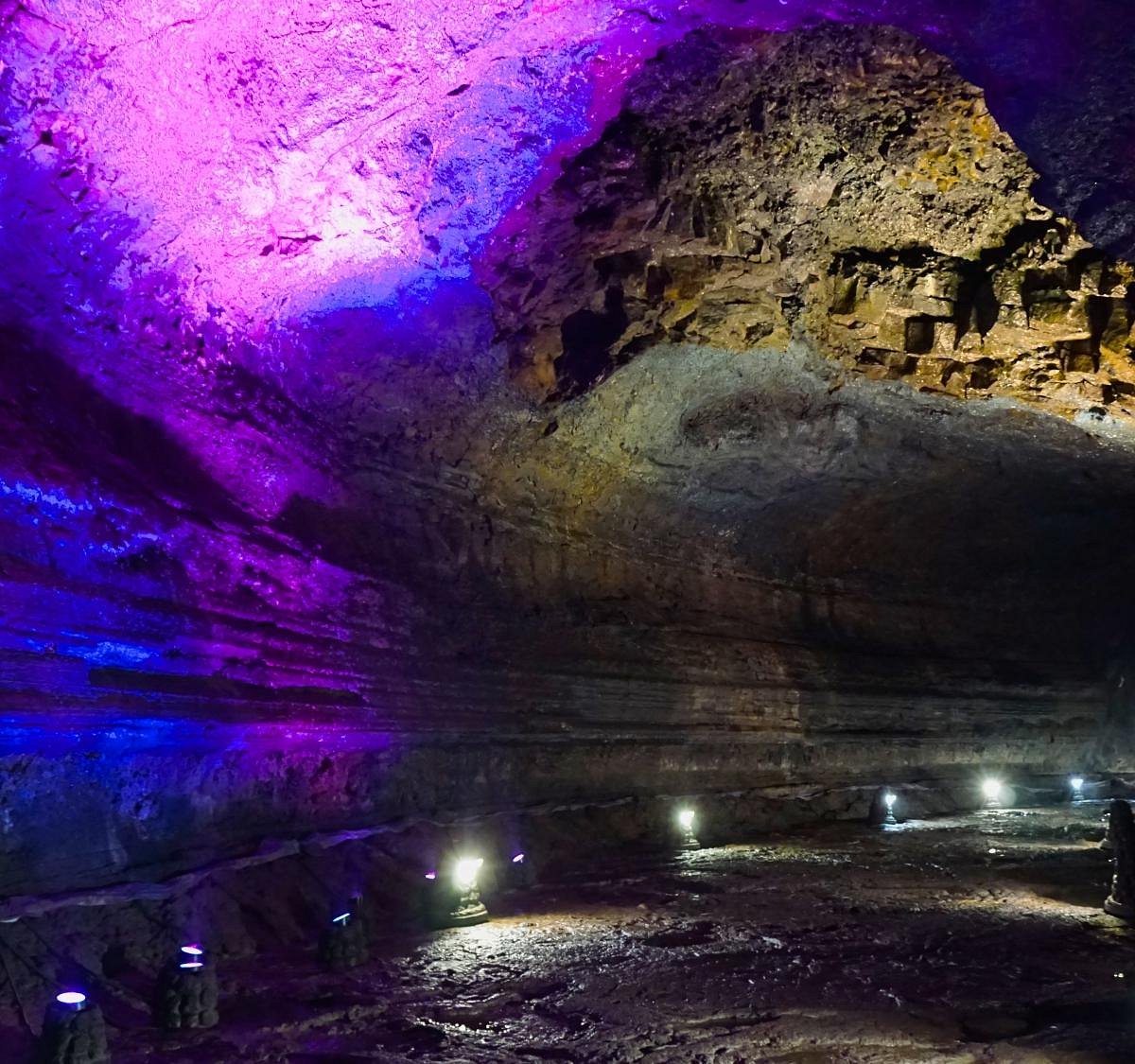
Manjanggul Cave is the longest lava tube in the world. It is 13km long and 5 meter wide and the height is about 5 to 10 meters high.
This lava tube was formed about 2.5 million years ago and has been well preserved all this while, revealing an interior that is totally out of this world. The beauty of this location will wow you for a long time to come.
Admission Fees: Adults: 2000 won/ Youth & Children – 1000 won/ Senior citizen: Free
How to get there: By bus–From Jeju-si/Seogwipo: Take the Donghoe Line Intercity Bus and get off at the parking lot near Manjanggul Cave Entrance (about 30 minutes ride). At the parking lot, you can take a town bus or a taxi to Manjannggul.
Hallasan Mountain
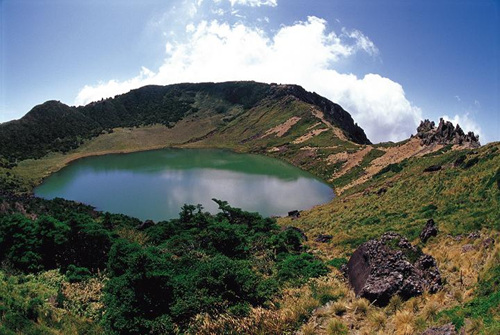
This mountain is situated at the heart of Jeju Island. It is the tallest mountain in Korea and also a dormant basalt volcano.
About 360 parasitic cones are found on the volcano’s flanks, creating a beautiful landscape worthy to visit.
On top of the mountain, there is a crater lake called Baengnokdam which is 3 km in circumference and 500 meters in diameter.
The view is beautiful any time of the year and as a diverse and rare ecosystem can be found at different altitudes of the mountain, it was made a Natural Conservation Area.
Admission Fees: Adults: 1600 won/ Youth: 600 won / Children: 300 won
How to get there: From Jeju-si: Take the Intercity bus bound for Seongpanak and get off at the entrance to Seongpanak. (About a 35-minute ride)
Cheonjiyeon Falls
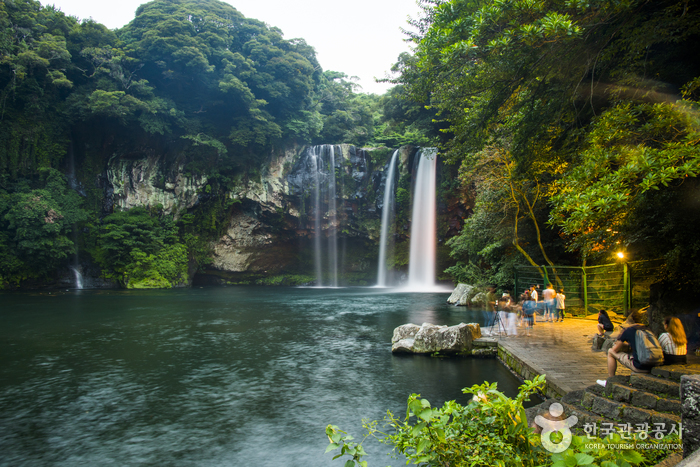
Cheonjiyeon Falls offers a magnificent view of water falling from a steep cliff completed with a sound that drowns out all others.
The name of this fall means “God’s pond” and derives its name from the legend of the seven fairies serving the King of Heaven.
It was said that these fairies came down to the pond on stairs of clouds and bathed in its clean waters.
On the physical side, the waterfall is 22 metres high, 12 metres wide and 20 metres in depth. The clear and deep water of the falls is renowned as a perfect habitat for Mutae eels.
For festivals, the annual Seven Fairies Festival is held here every May to celebrate the legend.
Admission Fees: Adults: 2000 won / Youth & Children: 1000 won
How to get there: Take a taxi from Seogwipo
Seonimgyo Bridge
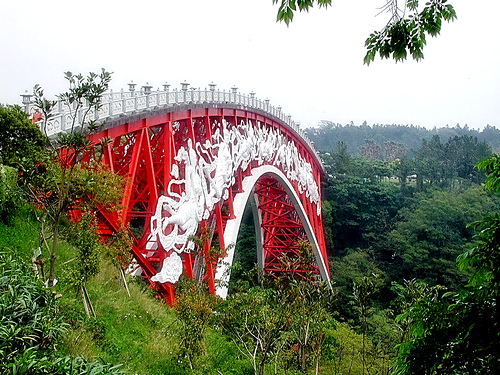
This is an arch bridge over the Cheonjiyeon Falls that has seven nymphs carved on both sides.
This bridge is also called the Seven Nymphs Bridge.
The bridge is similarly built to symbolise the legend of the 7 fairies who came down from Heaven at night to bathe in the clear waters of the Cheonjiyeon Falls.
Admission Fees: 2500 won
How to get there: Take the Airport Limousine Bus and stop at Jungmun Tourist Resort Complex
Love Land
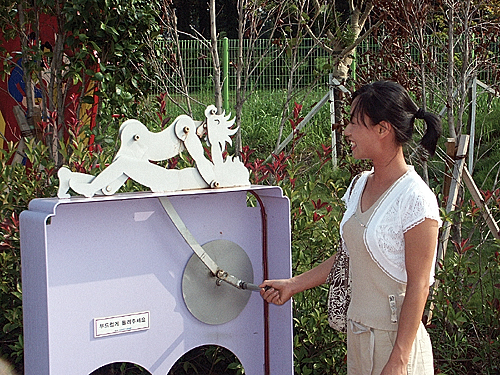
Jeju Loveland is an outdoor sculpture park focusing on the theme of sex. It was opened in 2004 and is responsible for running sex education films. It also features about 140 sculptures, representing humans in various sexual positions.
This is definitely something you will not find in Singapore.
There is also other interesting stuff like large phallus statues, stone labia and even hands-on exhibits such as a “masturbation cycle”.
It is definitely an interesting place to visit and somewhere to break the sex education to your children.
Admisison Fees: 7000 won
How to get there: Take a taxi from Jeju city
Teddy Bear Museum

If you are love teddy bears, you have to visit this place.
The Teddy Bear Museum houses an impressive variety of teddy bears that have been loved for more than a hundred years from the world over.
There are two galleries which showcase teddys from various countries. You can also enjoy the outdoor park where you can view the Jungmum Sea.
Admission Fees: Adults: 7000 won/ Youth: 6000 won/Child, Senior Citizen: 5000 won
How to get there: Take the Airport Limousine Bus and stop at Jungmun Tourist Resort Complex
Yeomiji Botanic Garden

This Botanic Garden is the largest one in Asia, boasting 1200 species of subtropical and tropical plants.
It is also known as a garden paradise as the name of the garden translated into that.
In the Yeomiji Garden, you can find several greenhouses with different themes – flowers, aquatic, cactus and succulents, jungle, and tropical fruits. Each of these holds its own appeal.
Admission Fees: 7000 won
How to get there: Take the Airport Limousine Bus and stop at Jungmun Tourist Resort Complex
Yakcheonsa Temple
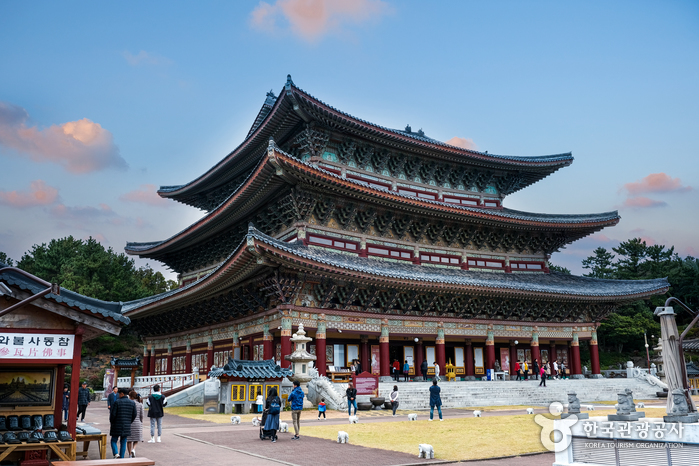
Yakcheonsa, meaning “temple where medicinal water flows” was built in 1981 by a Buddhist monk called Hae-in. He founded the temple after visiting a small cottage which was originally sitting on the site.
The main temple boasts multiple floors and balconies that overlook a beautiful 3-meter tall Buddha, all of which are contained in a large prayer hall.
The main hall is also filled with murals of Buddhist stories.
Admission Fees: Free
How to get there: Take Airport Limousine Bus and stop at Yakcheonsa Bus station.
Jeju Folk Village Museum
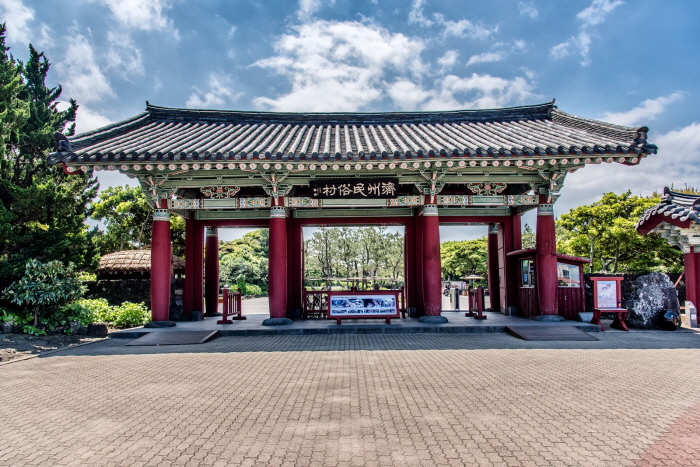
The Jeju Folk Village is worth a visit because it has restored the scenes of the village of the 1890s.
Among the villages in this open-air museum are Mountain Village, Hill-Country Village, Fishing Village and Shamanism Village.
On land that is more than 40 acres big, the museum is constructed after substantial research and analysis by experts.
Some of the exhibits on display are wooden wares, bamboo wares, and ironware. It is a good place to start exploring the customs of the olden days of Jeju Island.
Admission Fees: 7000 won / Youth: 4500 won/ Children: 3500 won
How to get there: Take a taxi to the Museum
Now that you know the 10 best things to do in Jeju Island, start planning your itinerary.
Featured Image: Korea Tourism Organisation




